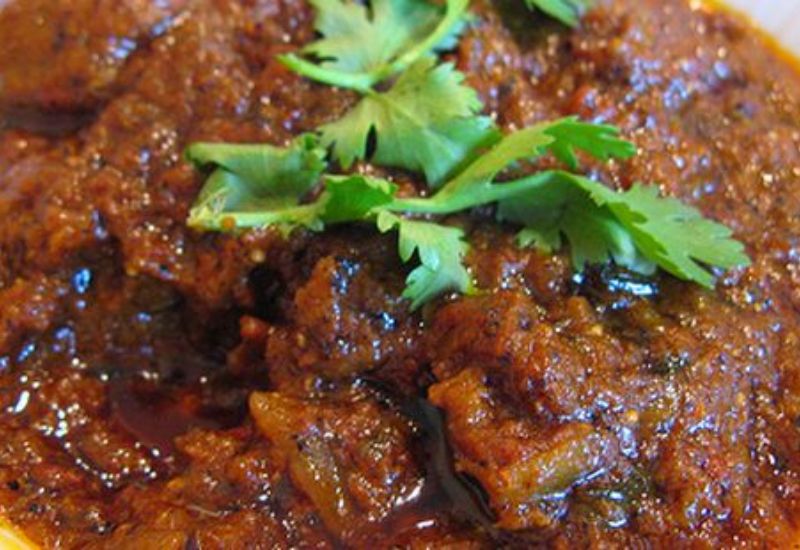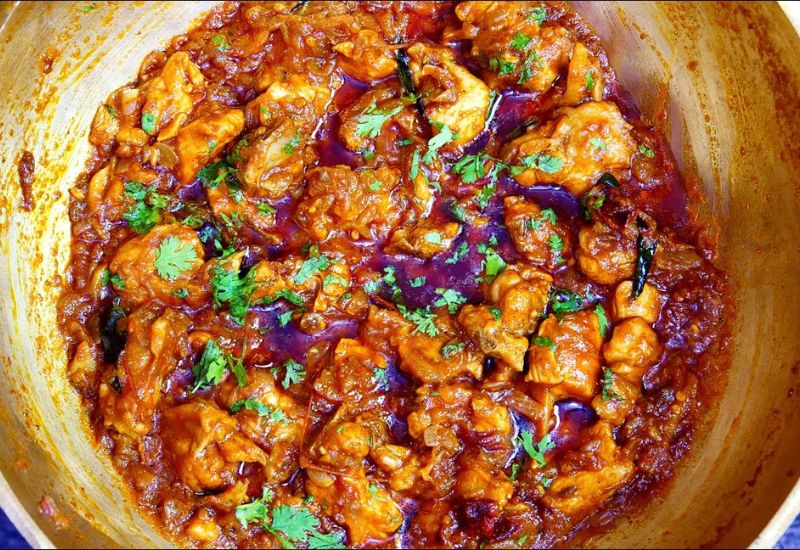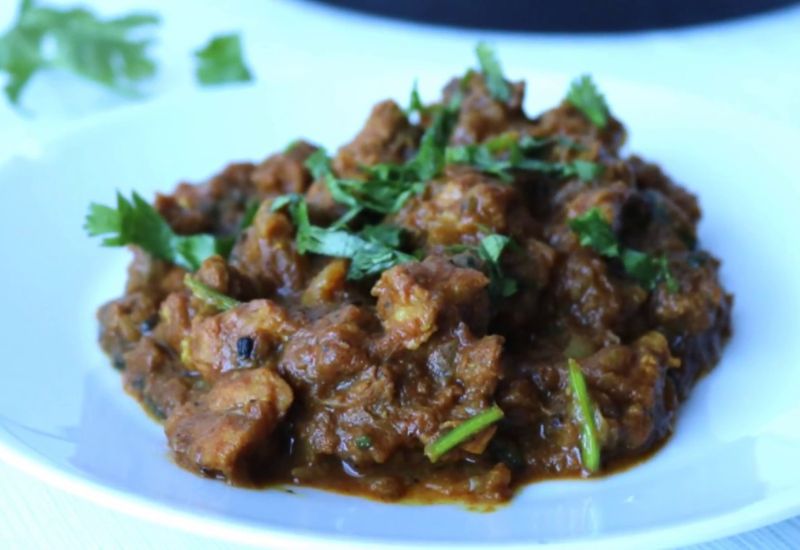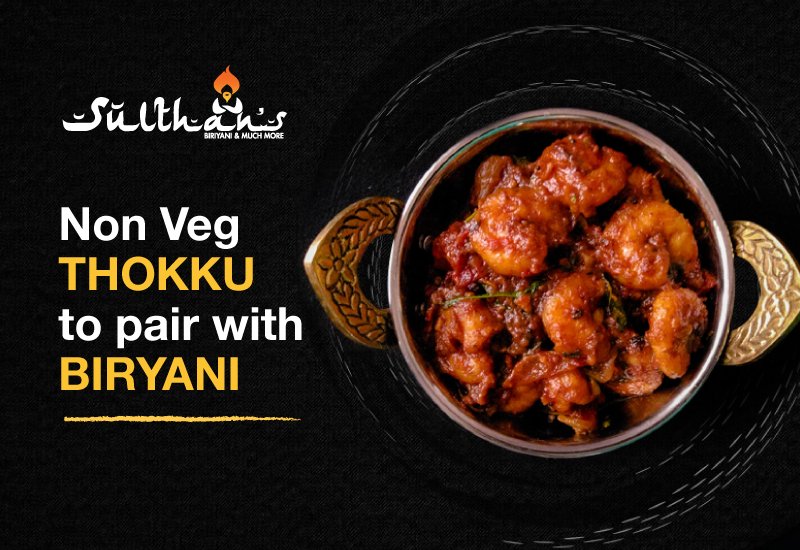Introduction
Finding the ideal partner in the symphony of flavours that is biryani is a delicious gastronomic journey. Every fan of biryani understands that a perfectly matched accompaniment enhances the dining experience.
Welcome to the realm of Non-Veg Thokku, where we will be taking you on a culinary adventure as we explore the concept of perfect harmony. This blog seeks to reveal the mysteries surrounding this delicious side dish by providing information on its many variations, original recipes, and regional influences.
Also check
Taste Good Tikkas you can try for every meal
The Art of Thokku: Elevating Culinary Symphony

South Indian condiments like thokku are more than just a side dish; they’re works of art that elevate the whole eating experience. A delectable combination of spices, herbs, and meats that have been carefully slow-cooked to perfection make up this savoury relish. Beyond just being sour and spicy, it enhances the flavour of the main meal by adding depth, complexity, and a rush of flavours.
Thokku’s adaptability to different meats, such as the richness of mutton, the succulentness of chicken, or the abundance of seafood, is what makes it so remarkable. Every regional variety offers a different taste profile by showcasing distinctive ingredients and cooking techniques. Enjoy Thokku’s culinary expertise as we explore its world; it’s a symphony of flavours that turns every meal into an unforgettable gourmet experience.
Non-Veg Thokku Varieties
Explore the diverse range of Non-Veg Thokku, where every type offers a unique story of taste and technique in the kitchen.
Chicken Thokku: This version highlights the richness of the chicken while balancing it with a tanginess that is just right.
Mutton Thokku: A symphony of flavours with soft flesh and a variety of spices, mutton Thokku is a celebration of richness that delivers a delightful and filling meal.
Seafood Thokku: Embracing the abundance of the sea, this variation captures the spirit of coastal cuisine with a wonderful blend of fresh seafood and aromatic spices.
Every variant offers distinct amounts of spice and cooking methods, guaranteeing a complex exploration of the varied realm of Non-Veg Thokku. These Thokku adaptations offer a culinary journey unlike any other, with flavours ranging from the fiery notes of chicken to the substantial melodies of mutton to the seaside allure of seafood.
Crafting the Perfect Pairing: A Symphony of Tastes

It’s an art to choose the perfect Non-Veg Thokku to go with your biryani; it elevates the whole dining experience. Think about the sort of biryani first, whether it’s the fragrant Lucknawi or the aromatic Hyderabadi. Choose a mellower Thokku to counterbalance the heat in a spicy biryani or a rich and savoury Thokku to complement a biryani that is moderately spiced.
A careful balancing act between textures and flavours is necessary to achieve the ideal match. If the flavour profile of your biryani is strong and intense, a mild Chicken Thokku could be the perfect match. On the other hand, the robust and piquant Mutton Thokku can be a suitable substitute for a mutton biryani. This balance of flavours produces a magnificent gastronomic symphony that enhances the dining experience and lets each dish take centre stage.
Homemade Non-Veg Thokku Recipes
These step-by-step recipes for Homemade Non-Veg Thokku will take you on a gourmet adventure in your own kitchen while exhibiting the unique flavours of various types of meat.
Chicken Thokku:
Green chillies, curry leaves, and mustard seeds are sautéed in hot oil.
Brown the boneless chicken chunks after adding them.
Add a seasoning mixture of coriander, cumin, garam masala, and salt.
Cook the chicken slowly so that it absorbs the flavour of the fragrant spices and becomes soft and tasty.
Mutton Thokku:
Mutton chunks browned with cardamom, cloves, and cinnamon.
For strong flavours, add turmeric, red chilli powder, and ginger-garlic paste.
Simmer the mutton until it reaches a soft, melt-in-your-mouth consistency, retaining its natural flavour.
Seafood Thokku:
Mix tamarind, coconut, and fenugreek seeds with fresh fish.
Add fenugreek powder, mustard seeds, and turmeric to make the seaside experience even better.
Allow the seafood to absorb the sound of the coast, creating a delicious Thokku with a tinge of the sea.
Variations and Customization:

- Adjust spice levels: Customize the chilli content to suit your taste preferences, creating milder or spicier versions.
- Add vegetables: Introduce diced tomatoes, onions, or bell peppers for added texture and freshness.
- Experiment with herbs: Infuse thokku with fresh coriander or mint for a herbal twist.
- Nutty richness: Incorporate ground nuts or coconut milk for an extra layer of richness.
Take advantage of your creative cooking skills and adapt these recipes to suit your tastes. These home-baked treats guarantee a symphony of flavours that satisfy your particular palate, whether you prefer the assertiveness of Chicken Thokku, the heartiness of Mutton Thokku, or the coastal allure of Seafood Thokku. Take pleasure in creating customised Non-Veg Thokku, which will make every meal a celebration of your culinary prowess.
Regional Influences
The realm of Non-Veg Thokku is a complex tapestry made up of various regional influences, each of which adds distinctive tastes and methods to this kind of cooking.
South India:
Take in the hot tones of Tamil Nadu with this dish, Chicken Thokku, which has a strong curry leaf, fenugreek, and red chilli combination.
Seafood Thokku, which combines coconut, tamarind, and mustard seeds to create a taste of the Malabar coast, embodies the coastal beauty of Kerala.
Also check : Types of south Indian biryani
North India:
Mutton Thokku in Punjab is a hearty blend of Punjabi spices, enhanced by the depth of ghee and a hint of kasuri methi.
East India:
Bengal presents a Fish Thokku that perfectly embodies Bengali cuisine by combining the subtle tastes of freshwater fish with mustard oil, panch phoron, and green chillies.
West India:
Maharashtra serves a Spicy Kolhapuri Chicken Thokku that highlights the lively flavours of the region with its robust Kolhapuri masala.
Fusion Across Cultures:
A dish known as Chili Chicken Thokku, which combines soy sauce and Indian spices to create a distinctive fusion, may have Indo-Chinese roots.
The unique ingredients and cooking techniques from each area impact the Non-Veg Thokku’s spice blend, scent, and consistency. Thokku becomes a canvas for regional expressions, delivering a glimpse of the cultural richness embedded in each spoonful of savoury. The culinary traditions of India create a diverse and flavorful universe.
Conclusion
Let your taste buds lead the way as we come to the end of this gastronomic journey. Try different spices, make your own combinations, and enjoy the delicious symphony that results from the marriage of biryani and Thokku. Customise, explore, and savour the various manifestations of this dynamic culinary pair—the canvas is yours. Accept the delight of trying new dishes, and may the magical combination of Non-Veg Thokku and biryani always enhance your dining experiences. Cheers to many delicious flavours and culinary explorations in the future!
FAQs
- What is a good combination with biryani?
In Hyderabad, biryani is often accompanied by delectable side dishes to enhance the dining experience. Raita, a yoghurt-based condiment, provides a cooling contrast to the rich and flavorful biryani. Mirchi ka Salan, a tangy and spicy chilli curry, adds an extra layer of taste. Additionally, a simple salad of sliced onions and cucumber with a squeeze of lemon serves as a refreshing palate cleanser.
- What is biryani traditionally served with?
Traditionally, side dishes that balance the flavours of the biryani are served alongside it. Salan, a hot curry, and raita, a sauce made with yoghurt, are typical sides. To add a cool contrast to the flavorful and rich biryani, you might also serve sliced onions, cucumbers, and a wedge of lemon.
- What to serve with Kolkata biryani?
Bengali biryani, renowned for its distinct flavour combination, is typically served with side dishes that accentuate its flavour. A crucial component of Kolkata biryani is aloo (potato), which is frequently served with aloo posto or potatoes in a stew made with poppy seeds. To add a cool contrast to the flavorful and rich biryani, you may also serve a basic salad or raita made with cucumber and mint.
- How to eat chicken biryani with raita?
To savour chicken biryani and raita, take the following actions:
- Make sure you get some rice and chicken when you take a spoonful of biryani.
- Coat it thoroughly by dipping it into the raita.
- Savour the harmonious fusion of tastes from the refreshing raita and the spicy biryani.
- Continue switching between spoonfuls of raita and bite-sized portions of biryani to counterbalance the dish’s richness with the cool yoghurt-based condiment.
- What to eat after biryani?
To clear the palate after chowing down on biryani, choose a light and refreshing dessert. Traditional treats like gulab jamun or rasgulla or a refreshing bowl of kheer (rice pudding) are popular choices. The sweet and fulfilling finale of the rich and aromatic biryani experience is offered by these delicacies.
- What is served with biryani in Hyderabad?
Traditionally, biryani is served with side dishes in Hyderabad that accentuate its flavorful, rich sauce. A refreshing contrast is provided by the yoghurt-based sauce called raita, which has spices and mint. Another taste dimension is provided by the zesty and hot chilli curry, mirchi ka Salan. To round off the meal, some sliced onions, cucumber, and lemon wedges act as cool palate cleansers.




